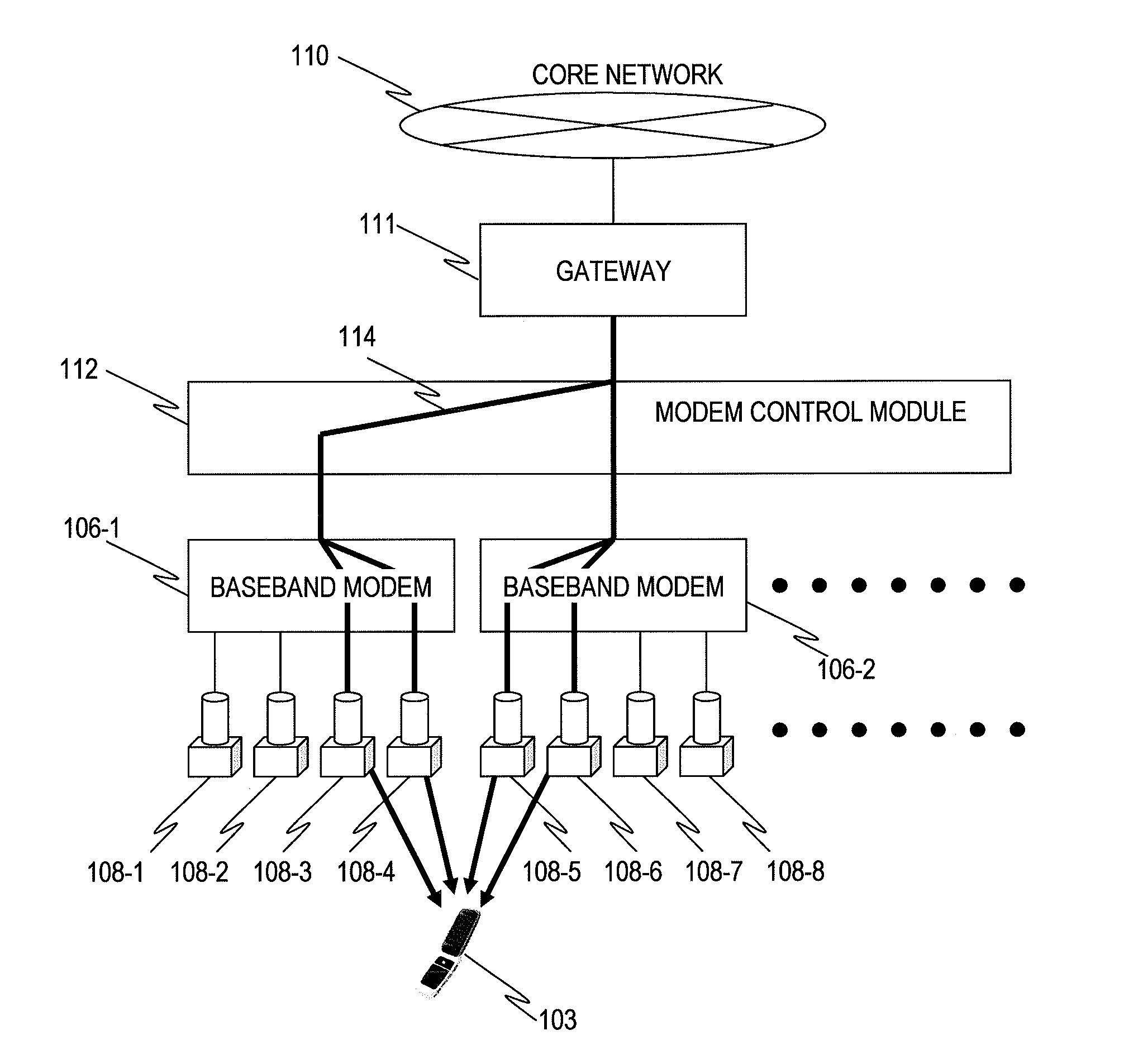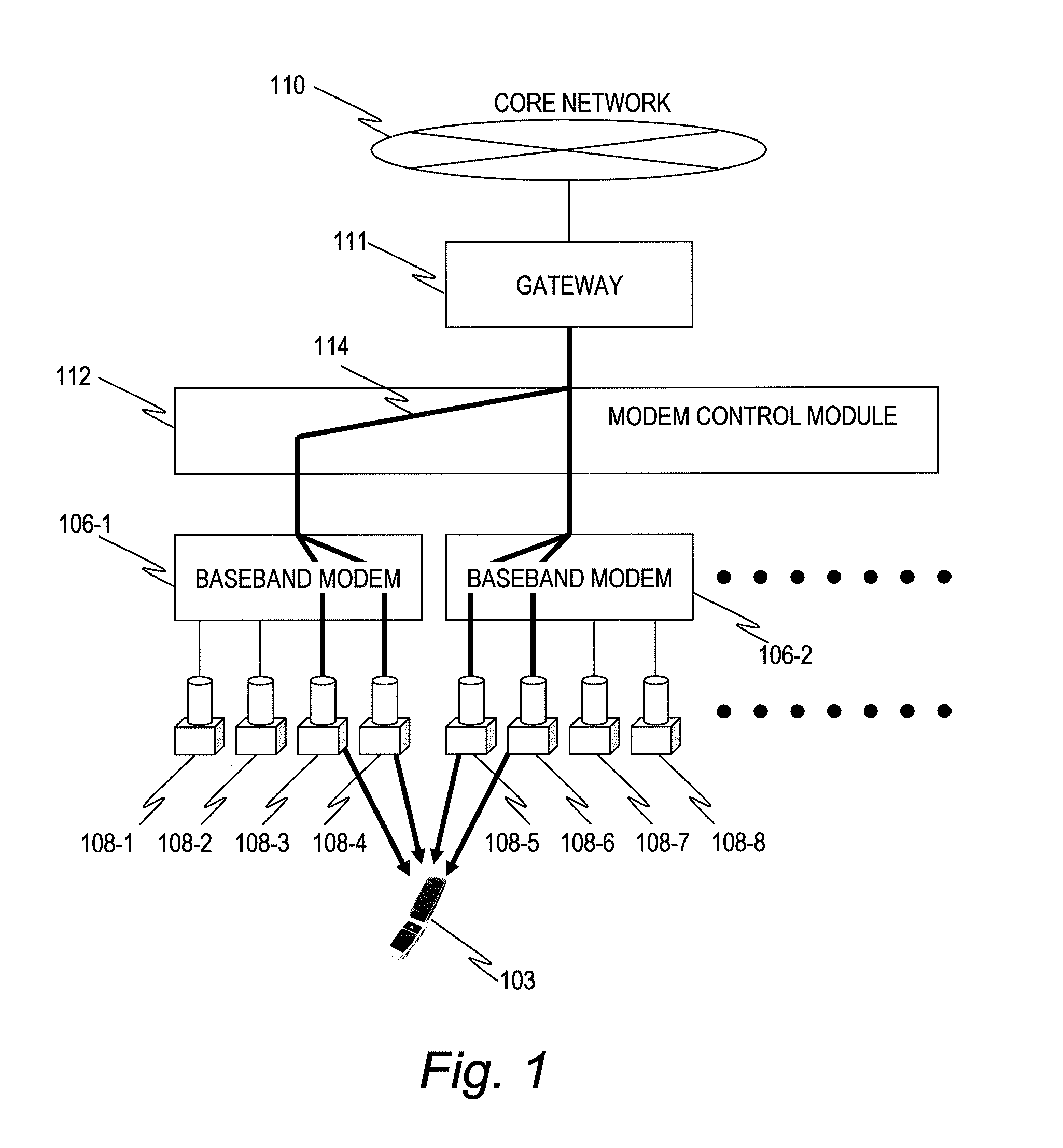Wireless Communication System and Communication Control Method
a communication system and control method technology, applied in the field of wireless communication systems, can solve the problem of not having a specific communication procedure for selecting antennas across a plurality of cells, and achieve the effects of reducing inter-cell interference, improving frequency usage efficiency, and improving communication quality of terminals
- Summary
- Abstract
- Description
- Claims
- Application Information
AI Technical Summary
Benefits of technology
Problems solved by technology
Method used
Image
Examples
first embodiment
[0058]FIG. 1 is a diagram illustrating a network configuration of a wireless communication system according to a first embodiment.
[0059]The wireless communication system according to the first embodiment includes a gateway 111, modem control module 112, baseband modems 106-1, 106-2, . . . (hereinafter, referred to simply as “106” if distinction between the baseband modems is not necessary), and remote radio units (RRUs) 108-1, 108-2, . . . (hereinafter, referred to simply as “108” if distinction between the RRUs is not necessary). The wireless communication system according to this embodiment is provided with a plurality of baseband modems 106, but may be provided with one baseband modem 106. Further, the wireless communication system according to this embodiment is provided with a plurality of RRUs 108, but in the case of being provided with the plurality of baseband modems 106, may be provided with one RRU 108 for each of the baseband modems 106.
[0060]The gateway 111 is a node for...
second embodiment
[0200]FIG. 22 is a diagram illustrating a network configuration of a wireless communication system according to a second embodiment of this invention.
[0201]The wireless communication system according to the second embodiment is different from the wireless communication system according to the first embodiment in which the baseband modems 106 and the RRUs 108 are coupled to each other based on a predetermined correspondence relationship in that the modem-RRU switch 113 is provided between the baseband modems 106 and the RRUs 108. It should be noted that, with regard to the second embodiment, only points thereof different from the above-mentioned first embodiment are described, and descriptions of the same configurations and the same processings as those of the above-mentioned first embodiment are omitted.
[0202]The modem-RRU switch 113 changes over a switch according to an instruction from the modem control module 112, and changes over a coupling between at least one antenna port of t...
PUM
 Login to View More
Login to View More Abstract
Description
Claims
Application Information
 Login to View More
Login to View More - R&D
- Intellectual Property
- Life Sciences
- Materials
- Tech Scout
- Unparalleled Data Quality
- Higher Quality Content
- 60% Fewer Hallucinations
Browse by: Latest US Patents, China's latest patents, Technical Efficacy Thesaurus, Application Domain, Technology Topic, Popular Technical Reports.
© 2025 PatSnap. All rights reserved.Legal|Privacy policy|Modern Slavery Act Transparency Statement|Sitemap|About US| Contact US: help@patsnap.com



